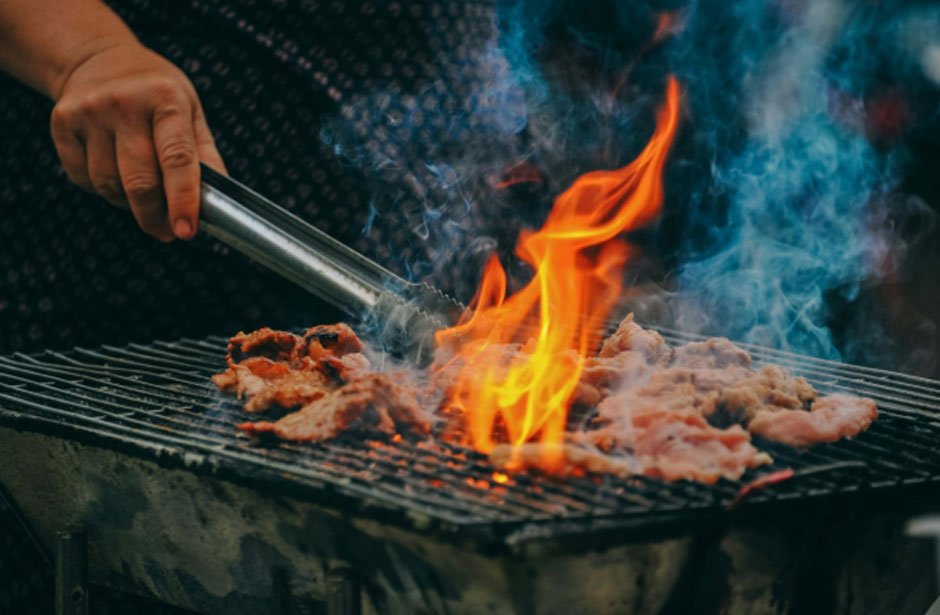Barbecue in the South is more than just a way to cook. It’s a culinary tradition, a community gathering, and a source of local pride. From the slow-smoked aroma drifting through small towns to the tangy sauces passed down through generations, Southern BBQ is woven into the fabric of life here. Every bite tells a story of patience, skill, and passion for flavor.
While the region as a whole shares a love for barbecue, the details vary from place to place. Different states, and even different towns, have their signature sauces, cuts of meat, and smoking techniques. Tennessee is one of the states that takes this tradition seriously, with both big cities and small communities perfecting their styles. Just outside Chattanooga, the town of Hixson embraces this heritage with local barbecue spots that know how to do it right. Here, slow cooking and flavorful seasoning aren’t just methods. They’re part of a culture that’s been perfected over time.
If you’re exploring Tennessee’s food scene, starting with a taste of what Hixson has to offer is a great way to understand why Southern BBQ remains such a beloved tradition.
A Tennessee Treasure: Local Flavors Done Right
In Tennessee, barbecue isn’t just food, it’s an art form. The state is known for its pulled pork, tender ribs, and savory sauces that balance tanginess with a touch of sweetness. In East Tennessee, the emphasis is often on slow-smoking pork until it’s melt-in-your-mouth tender, then pairing it with sides that feel like they came straight from a family kitchen.
If you’re in the area, experiencing Hixson BBQ is a must for anyone who wants to taste authentic Southern flavors crafted with care and tradition. They offer a menu full of classic smoked meats, from pulled pork to smoked chicken, all prepared with time-honored methods that bring out the best in every bite. Behind the scenes, they’ve built a reputation for quality by using fresh ingredients and perfecting the balance of smoke, seasoning, and tenderness. Buddy’s bar-b-q, the name behind Hixson BBQ, has been serving slow-smoked barbecue since 1972, making them a trusted source for locals and travelers looking for a true taste of Tennessee tradition.
The beauty of a place like this is that it gives you a genuine snapshot of local flavor. You’re not just eating. You’re experiencing the result of decades of passion for barbecue done right.
The Regional Styles of Southern Barbecue
While Tennessee has its own proud barbecue identity, it’s just one piece of a larger Southern BBQ puzzle. Each region has unique touches that make its flavors distinct. In Memphis, for example, you’ll often find dry-rubbed ribs and a tangy tomato-based sauce. Travel east to the Carolinas, and you’ll encounter vinegar-based sauces in the east and mustard-based blends in the South. Texas takes a beef-first approach, with brisket as the star, while Kansas City is known for its thick, sweet sauces and variety of meats.
Tennessee’s style, particularly in areas like Hixson, often draws from Memphis traditions while keeping a regional twist, like slightly sweeter sauces or side dishes that reflect Appalachian influences.
The Art of Smoking and Slow Cooking
If there’s one rule all great pitmasters agree on, it’s “low and slow.” Southern BBQ relies on cooking meat at a low temperature over several hours to achieve tenderness and lock in smoky flavor. The wood you choose matters, too; hickory, oak, and pecan are popular choices in Tennessee, each adding its flavor profile to the meat.
The process demands attention. Temperature control, seasoning, and the right amount of smoke are all critical. That’s why the best barbecue often comes from places where the pitmasters treat the cooking process as a craft, not a chore.
Sauces That Tell a Story
In the South, barbecue sauce is as personal as a signature. Some recipes have been in families for generations, never written down but passed along through practice. Tennessee sauces tend to have a tomato base with a mix of sweet and tangy notes, perfectly complementing smoked pork.
Sauces aren’t just an afterthought. They’re part of the overall experience. A good sauce enhances without overpowering, letting the smoky meat remain the star. Whether you like your barbecue with a light brush of sauce or fully coated, trying a local variety is essential to truly understand a region’s flavor.
Beyond the Meat: Southern BBQ Sides
Barbecue may be the main event, but the sides often steal part of the show. In Tennessee, you’ll find classics like baked beans slow-cooked with a touch of sweetness, creamy coleslaw, cornbread, mac and cheese, and collard greens. These sides aren’t just filler. They balance the richness of smoked meats and complete the meal.
Some sides even have regional roots of their own, evolving alongside the barbecue tradition. Pairing the right side with your main plate can make the difference between a good BBQ experience and a great one.
BBQ as a Social and Cultural Experience
Southern barbecue is as much about community as it is about food. Backyard cookouts, church fundraisers, and local BBQ festivals are staples of life in many towns. Gathering around the smoker becomes a way to connect with neighbors, share stories, and celebrate milestones.
In Tennessee, barbecue restaurants often reflect this spirit. They’re places where locals greet each other by name, families gather for weekend meals, and visitors are welcomed like old friends. Eating BBQ here isn’t just about satisfying hunger. It’s about sharing in a piece of local life.
Tips for Finding the Best Southern BBQ on Your Travels
When traveling through the South, finding the best barbecue often means looking where the locals go. Pay attention to smoke drifting from small roadside spots or bustling diners filled with people who clearly know the menu by heart.
Asking locals for their recommendations is one of the quickest ways to discover hidden gems. And don’t be afraid to try multiple styles on your journey. Each region offers something unique, and tasting them side by side will deepen your appreciation for the diversity of Southern barbecue.
Southern barbecue is more than a meal. It’s a living tradition passed down through generations. In Tennessee, and especially in communities like Hixson, BBQ represents the perfect blend of flavor, patience, and pride. Each plate tells a story of local history and personal dedication to the craft.
Whether you’re traveling through the South or seeking out authentic flavors closer to home, take the time to enjoy barbecue in all its forms. Slow down, savor the details, and let each bite remind you why this culinary tradition continues to bring people together across the region.






Leave a Reply